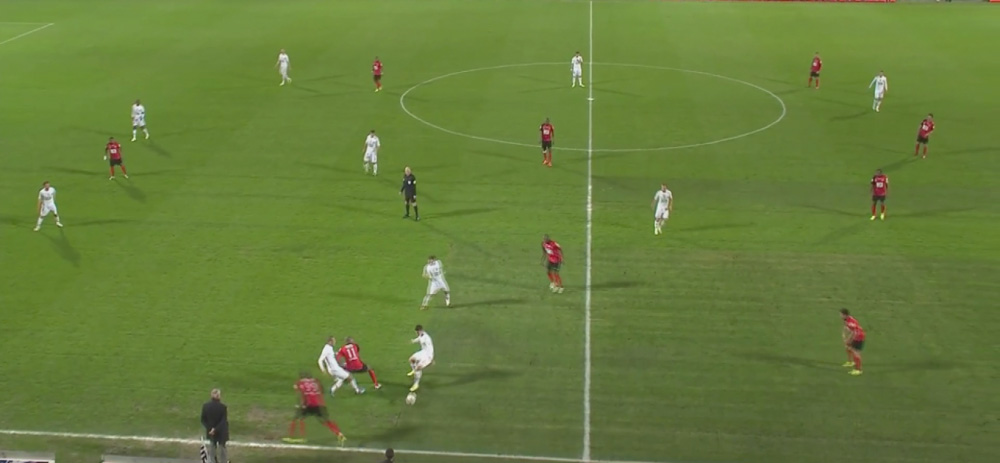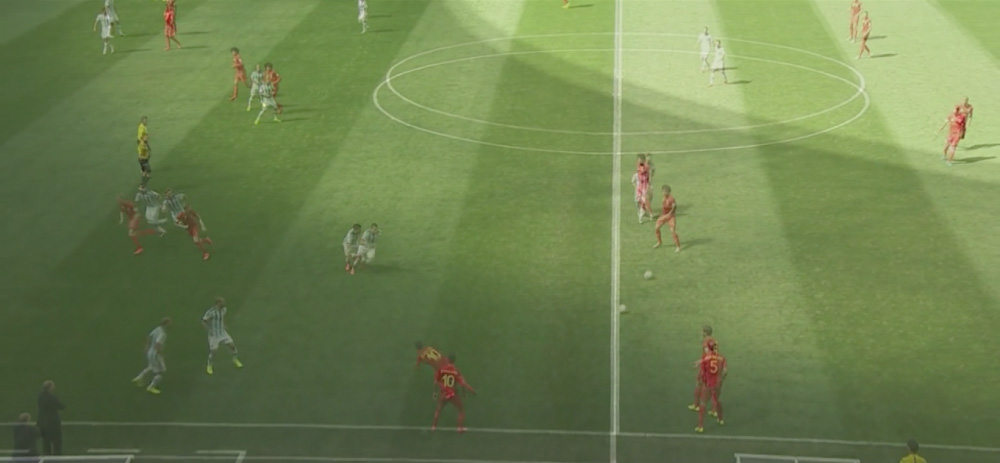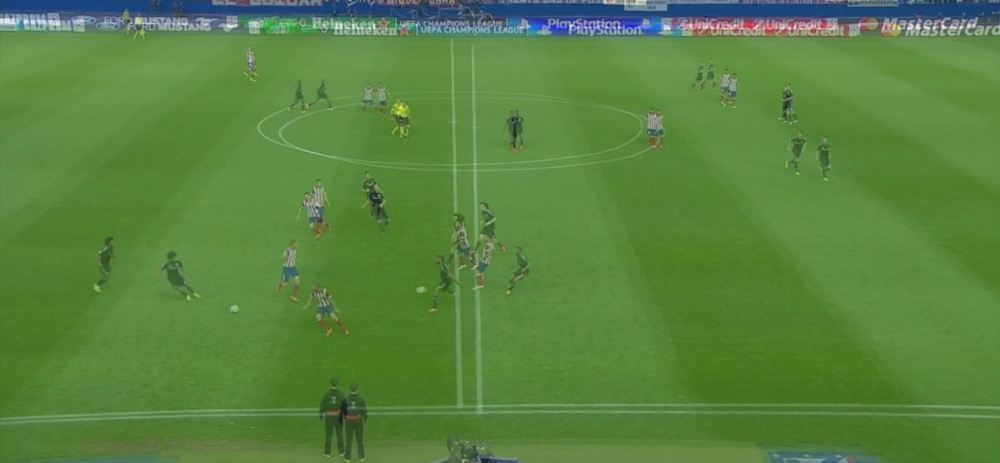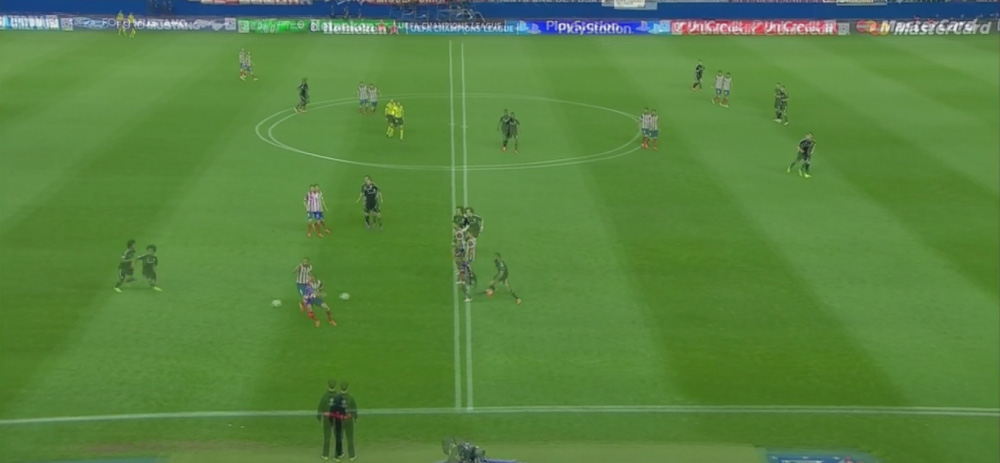aurélien
grèzes
standing
in
between
enclosed
shell
nothing
flows
bounces
splittings
self-portraits
3 words
departures
the chosen
letters
ABOUT
+ @ |
|
|
| |
|
|
BOUNCES 2015. 20 sequences - various durations (loop)
I
was watching a French soccer match between Paris and Monaco.
At one point, a player from Paris threw the ball at the other
side of the field.
The ball crossed the width of the field but, because of a lack
of precision of the pass, it bounced halfway between two players.
Both of them moved toward
the ball but,
just after having started, they stopped, raised their heads,
and looked each
other.
This
eye contact, supposed to determine which of the two had to
catch the ball,
created a floating
pause
for all the players on the field.
This “interruption” lasted
a very short instant, so short that soccer audience barely saw it.
Far from being a timeout, these one or two seconds were a concentrate of
energy.
Obviously, the ball did not stop, but slowed down, as if it had escaped
the domination of the players.
The contrast between the intensity of the players and the slackening of
the ball was striking.
|
| |
|
|
|
|
| |
|
|
I
wrote down and analyze these instants where a tension emerges
between mobility and immobility, intention and indecision.
I focus on a misunderstanding or an unexpected event on the
field, that created an interval,
which impacted the player’s
movements.
By superimposing twice the same action in both directions, I intend to show
several views of the same motion.
Then the viewer is prompted to imagine a correct path, as originally “presumably” happened
on the field. Here reality is blurred, hard to see.
What remains are fictitious trajectories. From
the largest motions to the smallest and almost indiscernible
gestures,
I imagine that the viewer could “feel” the
ball
in order to
deduce its motion.
The ball acts as a magnet for both the players and those who see them on
the screen.
The “blurring” is partially emphasized by the scale.
In TV close up motions are easier to analyze: bodies are shown with accuracy,
contacts with the ball are easy to determine.
By contrast, in most of these Bounces, players are small, and smaller still
is the ball.
How can we perceive motions that are sometimes impossible to see in
detail? As
the two images overlap, players and ball of the one blend
with those of the other.
How to perceive the movements
in their original when the two images stack
on the flatness of the screen? The result is misleading. 






|
| |
|
|
|






